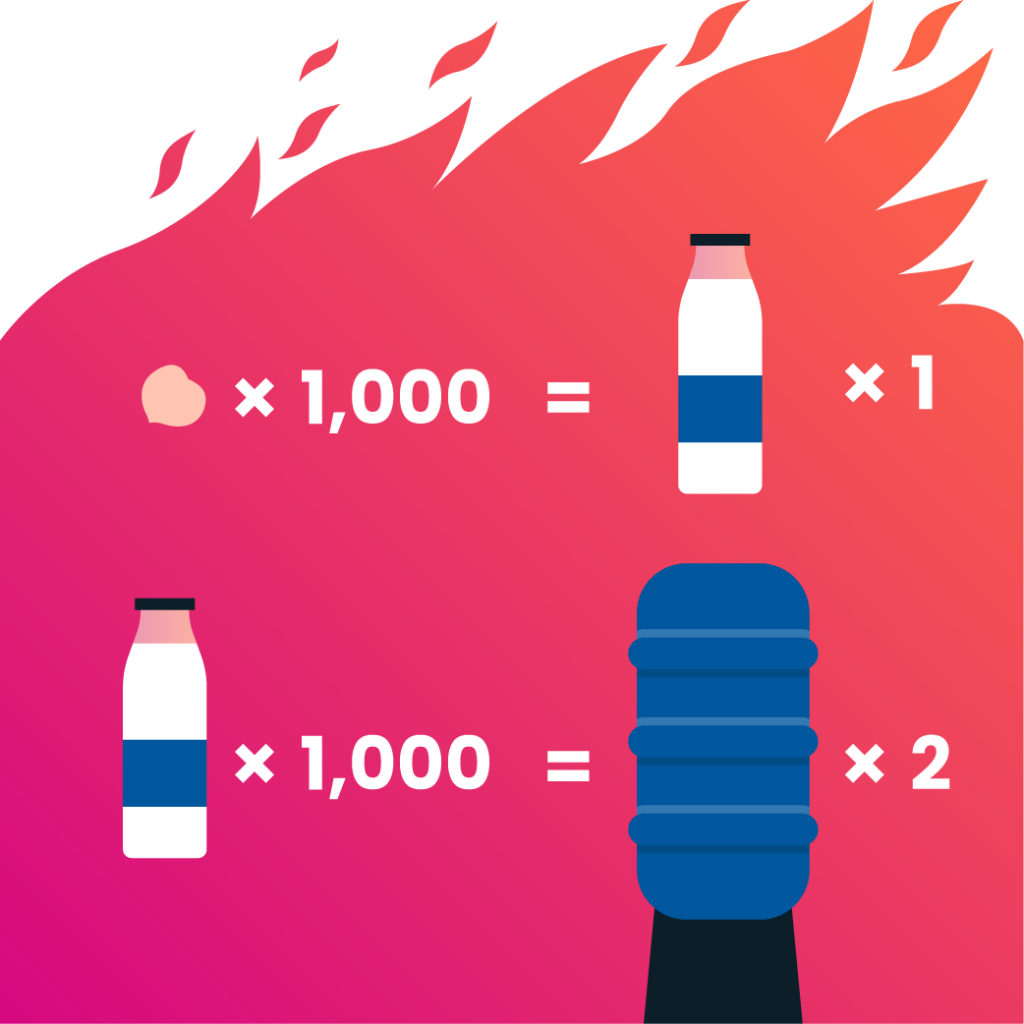How to Cut Your Carbon Footprint
The first step to reducing your carbon footprint is understanding the size of it and what’s contributing. Then, you’ll know which changes can really make a difference.

What is a Carbon Footprint?
Your carbon footprint is the total amount of carbon emissions generated from your lifestyle and actions. Your home energy and travel habits make up a significant part of your emissions, but it also includes the food you eat and the goods and services you buy.
The average yearly individual carbon footprint is around 13 tonnes, so getting to zero is an ambitious task. Instead of feeling overwhelmed by the challenge, start by aiming for a 5-tonne footprint. This target is increasingly seen as the ideal maximum for individuals striving towards zero emissions. Embracing a 5-tonne lifestyle represents a significant reduction compared to the UK’s average carbon footprint.
However, carbon dioxide emissions per person will have to be below 2.1 tonnes annually by 2050 for us to achieve limiting global temperatures to well below two degrees.


What does a tonne of CO2 look like?
A helpful visualisation, used in ‘How Bad Are Bananas’ by Mike Berners-Lee, is if you filled up two standard-sized garden water butts to the top with petrol and set them on fire, you would be directly realising around a tonne of carbon dioxide into the atmosphere.
Doing the same with a pint milk bottle would release just over a kilogram of CO2, and burning the size of a chickpea would realise around a gram.
The Power of Individual Action
Like many others, you’re probably already trying hard to reduce your impact on the environment. Perhaps you’re using your car less or you’re avoiding single-use plastics.
It’s easy to feel that whatever you do as an individual to tackle climate change, the results will be so small in the grand scheme of things, that they’re worthless. However, this doesn’t diminish their importance.
Every effort to lower carbon emissions matters. Beyond personal impact, these actions can significantly influence others. Studies indicate that by making big choices, like flying less, you can create a ripple effect, reshaping societal norms and inspiring broader change.


“Households play a vital role in nurturing a global mindset shift toward rethinking how and when energy is used. Knowledge is power, and we all have the power to set an example for others to follow. By adopting simple yet effective energy-saving practices, we pave the way for a sustainable future and significantly reduce our carbon footprint.”
Expert advice from the Energy Doctor

Offsetting Your Carbon Footprint
When it comes to cutting your carbon footprint, you might have considered offsetting your emissions. It might be more convenient paying to clear any eco-guilt, but the real impact comes by getting hands-on. You’ll feel better for it too!
Start small with simple lifestyle changes like cutting down on wasted energy at home. Unplug, switch off, and be mindful of your daily habits. Then, when you’re ready, consider steps that could significantly reduce your impact, like installing solar panels, which cuts annual emissions by around 1.6 tonnes.
Ways to Cut Your Carbon Footprint
You might think you need to drastically change your lifestyle to make big reductions in your carbon emissions. But it’s not all about going vegan. While adopting a plant-based diet can cut your carbon footprint by 0.8 tonnes, other measures can have a greater long-term impact not only on your emissions but on the cost of your energy bills too.
They may require more consideration and investment, but these improvements will continue to positively impact your carbon footprint as the electricity grid cleans up. While the average carbon footprint in the UK is 13 tonnes, this is down from 15 tonnes 10 years ago due to more renewable electricity sources now used on the grid.

Increasing energy efficiency: 250kg saved
The less energy you use at home, the less dirty grid energy you’ll be using. A free energy-saving tool like Loop makes it easy to see where you’re wasting energy so you know where to prioritise your efforts. On average, Loop users cut their carbon emissions by 250kg each year.
The way you use your things can also make a big impact on your carbon footprint. See the different ways to run your everyday appliances below, and check where your efforts place you now. Which changes would cut your emissions?

Doing the washing up:
360g CO2e by hand, sparingly, in warm water
470g CO2e in a dishwasher at eco-50C
600g CO2e in a dishwasher intensive 65C
3kg CO2e by hand, with extravagant use of water

A load of laundry:
330g CO2e washed at 30C, dried on the line
540g CO2e washed at 40C, dried on the line
590g CO2e washed ar 60C, dried on the line
2kg CO2e washed at 40C, tumbled-dried
2.1kg CO2e washed and dried in a washer-dryer

Leaving the lights on:
15kg CO2e 5-watt low-energy bulb for one year
300kg CO2e 100-watt incandescent bulb for one year

Upgrade to Energy-Efficient Appliances: 900kg saved
Investing in energy-efficient appliances can provide significant carbon savings – without requiring as much of a financial investment as solar and insulation. When you’re in the market for a new appliance, take a look at its energy label. It shows you how much energy the appliance uses compared to similar models. Look for the highest rating on the A-G scale, or A+++ to G scale for older models.
An A+++ rated tumble dryer could save 770kg CO2e more than a B-rated version over a 13-year lifetime.
An A-rated washing machine could save 100kg CO2e more than a D-rated version over an 11-year lifetime.
An A-rated dishwasher could save 28kg CO2e more than the lowest rated dishwasher.

Increase Your Insulation: 1.6 tonnes saved
Ensuring your home has the recommended insulation should be top of your list of home improvements. Although adding cavity wall and loft insulation may come at a cost, these are two insulation measures that pay themselves back the fastest and the savings can quickly add up.
Even better, many homes will qualify for 90% subsidies on insulation upgrades through the Great British Insulation Scheme. We’ve teamed up with insulation experts InstaGroup to make your insulation upgrades as easy as possible. Find out more in this blog article, which includes a handy checker to see if you qualify and a form to request a free consultation from InstaGroup.
Improving loft insulation can reduce your carbon emissions by 125kg each year.
Installing cavity wall insulation can cut emissions by 1.5 tonnes each year.

Install Solar Panels: 1.6 tonnes saved
Alongside reducing their electricity bills, the other main reason households install solar panels is to cut their carbon footprint. A typical array can save 1.6 tonnes of carbon emissions every year. Changing your lifestyle habits can help you make the most of the clean energy you generate – such as doing high-energy tasks, like running the washing machine, in the middle of the day.






